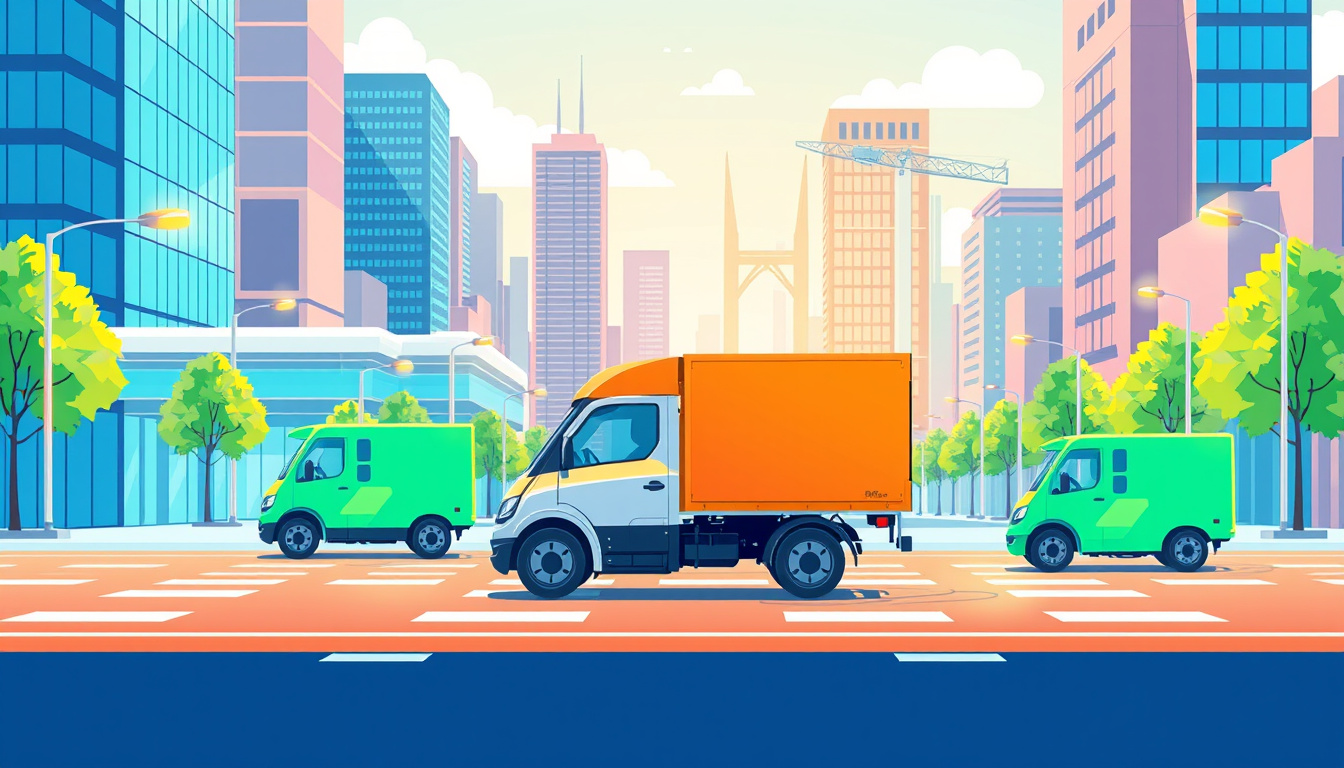As the global focus shifts toward sustainability and reducing carbon footprints, electric delivery vans are rapidly becoming a mainstay in modern logistics. Crucially positioned in the last-mile delivery landscape, these electric vehicles (EVs) are not just emerging as a viable alternative; they’re transforming the freight industry while significantly lowering greenhouse gas emissions.
The Need for Electrification in Delivery Services
Medium- and heavy-duty vehicles (MHDVs), which comprise delivery vans, contribute significantly to air pollution and greenhouse gas emissions. They represent about 24% of transportation sector emissions in the United States. Traditional delivery methods primarily relying on fossil fuels are not only detrimental to public health but also amplify climate change impacts. In this context, transitioning to electric delivery vans is both a necessity and an opportunity.
The shift to zero-emission delivery vans is gaining momentum as companies seek to comply with tightening environmental regulations and capitalize on the economic advantages of electric fleets. With benefits including lower operating costs and government incentives, businesses are beginning to recognize that electrification makes sound logistical and economic sense.
Market Growth and Adoption

The transition is tangible; as reported, over 27,500 zero-emission MHDVs were registered in the U.S. in 2023 alone, a dramatic increase from just around 600 in 2019. A growing number of businesses are integrating electric cargo vans into their operations, with major players like Amazon adopting fleets of Rivian’s electric delivery vans. Recent data shows that electric cargo vans accounted for over 7% of new vehicle registrations in 2023, underscoring their rising prevalence.
States such as Washington and Georgia are leading in electric cargo van registrations, attributing their growth to consumer demand, favorable regulations, and reduced operational costs. Companies with larger fleets benefit more significantly from the upfront affordability of EVs, amplified by various state and federal incentives, making them increasingly compelling investments for logistics firms.
Practical Benefits of Electric Delivery Vans
The operational advantages of electric delivery vans extend beyond emissions reductions. With 90% of Class 2b and 3 trucks and vans in the U.S. traveling less than 100 miles per day, many electric models are particularly suited for this type of predictable route. Charging these vehicles overnight at depots further enhances efficiency, eliminating concerns related to extensive downtime during the day.
Moreover, electric delivery vans offer compelling savings. For instance, fuel costs for an electric cargo van can be about $0.10 per mile, significantly lower than the $0.19 cost per mile for traditional gasoline vehicles. The total cost of ownership is projected to decline as technology advances and incentives remain in place, making electric vans not just environmentally friendly but also financially favorable.
Emerging Models and Innovations
Many manufacturers are stepping up to meet the rising demand for electric delivery vehicles. Companies like Canoo are launching models such as the Multi-Purpose Delivery Vehicle, while GM’s BrightDrop range is expanding with vehicles like the Zevo 400 and 600 targeted at commercial fleets. Rivian’s EDV700 has already made its mark in Amazon’s logistics chain, signifying a turning point in the integration of electric vehicles in mainstream package delivery.
Additionally, autonomous delivery vans are in development, such as Udelv’s Transporter, which aims to revolutionize last-mile operations further. These innovations in electric vans signal a substantial shift in how goods are transported—focusing not only on meeting current environmental standards but also on embracing future innovations in transportation.
Conclusion: A Sustainable Future
The rapid adoption of electric delivery vans reflects a broader commitment to sustainability within logistics and transportation. As businesses and consumers increasingly prioritize environmental responsibility, the logistics sector is poised for a revolutionary change toward cleaner alternatives. The greater proliferation of electric delivery vans signifies a promising shift towards sustainable and efficient distribution networks, setting the stage for a greener future in freight transport.
As the industry continues to evolve, the transition to electric vehicles represents not only an urgent response to climate change but also a foundational change in how deliveries will be managed in urban landscapes. By prioritizing electric delivery solutions, companies are not only enhancing their operational efficiencies but also aligning their practices with global sustainability goals.
——————————————————
Voltsandvolts.com is a blog dedicated to electric vehicles (EVs). Our blog features articles on EV reviews, stories, tips, tricks, charging infrastructure, and battery technology. Join the conversation and become part of the Voltsandvolts.com community today!
